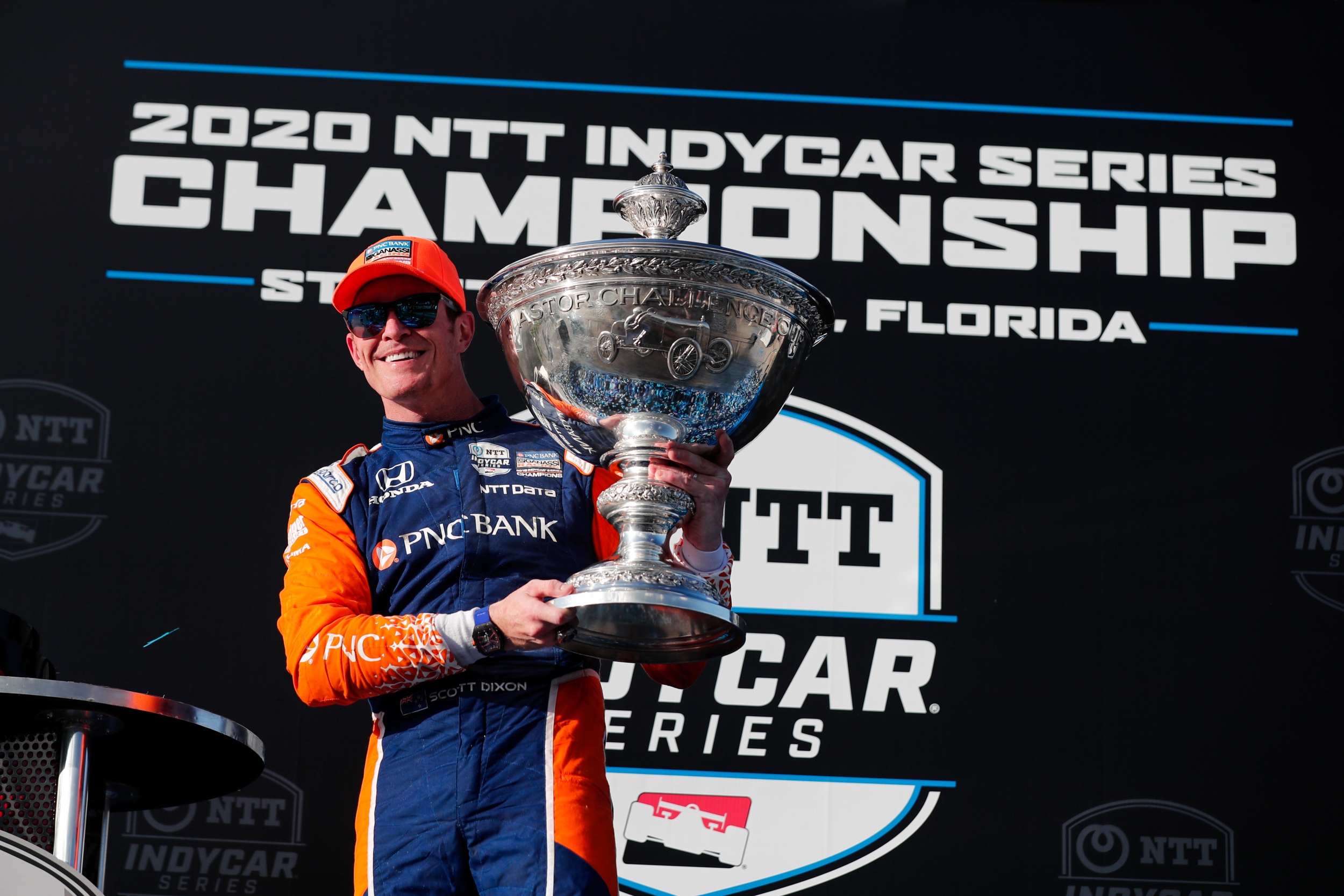Another season of Indy car racing has drawn to a close, and despite the best efforts of Josef Newgarden and Team Penske, Scott Dixon has been crowned series champion for the sixth time.
From eighth on the grid, Newgarden produced a superb win in the Firestone Grand Prix of St. Petersburg. But Dixon shadowed Newgarden’s every move, and his third-place finish in the NTT IndyCar Series finale was enough to secure the crown by 16 points. Honda won the INDYCAR Engine Manufacturer’s Championship.
Dixon started the 2020 season with three consecutive wins and his championship lead reached 117 points at one stage. Newgarden’s end-of-year blitz was nearly as effective as Dixon’s beginning, and both drivers ended the campaign with four victories. The difference-maker may have been the Indianapolis 500, where Dixon finished a close second to Takuma Sato, with Newgarden three places back in the only double-points race of the year.
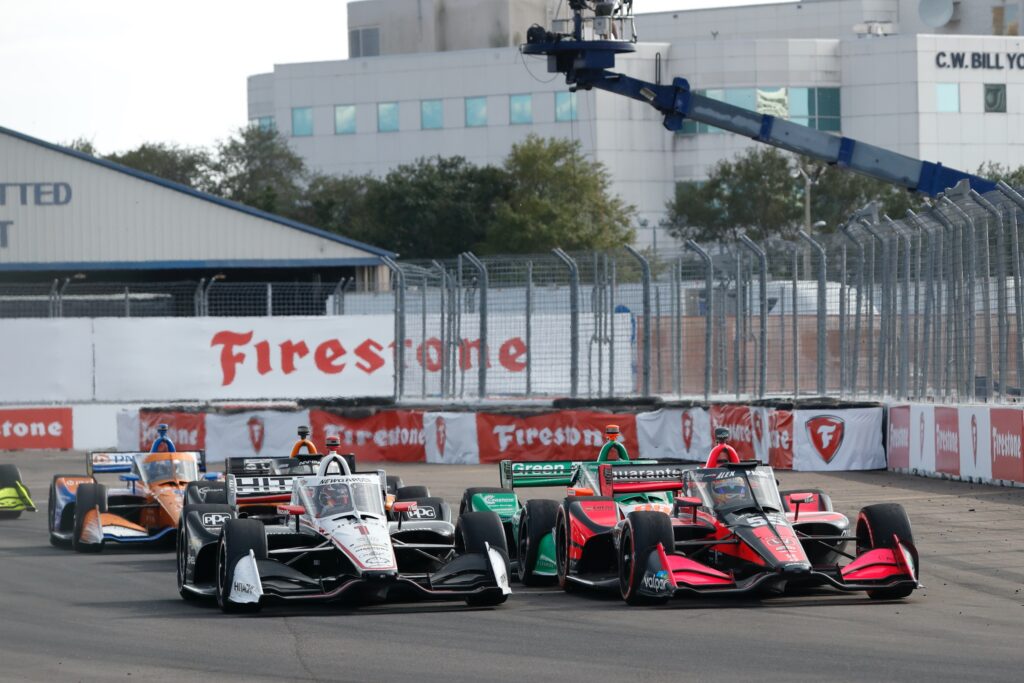
Racing fans love to bench race, and there’s no more popular topic than “Greatest of All Time.” With six championships and 50 Indy car race wins since 2001, Dixon is rightfully considered among the sport’s all-time greats, and as he continues to rise through the record books, people naturally want to compare his achievements to the legends who preceded him. Dixon’s statistics put him in heady company with the likes of A.J. Foyt, Mario and Michael Andretti and the Unser brothers, but some folks tend to be dismissive of drivers from the modern era given how radically different the sport is compared to 50 or 60 years ago.
Dixon’s six championships (2003-08-13-15-18-20, all achieved with Chip Ganassi Racing) rank second only to Foyt’s seven. The one “blemish” on Dixon’s record is the fact that he has won the Indianapolis 500 only once, but I think it’s ridiculous to measure a driver’s greatness based on their results in a single race. Is Dale Earnhardt’s legacy diminished because he went 1-for-23 in the Daytona 500? Was Jim Clark any less of a driver because he never won the Monaco Grand Prix?
Ten years ago, when Dario Franchitti won the Indy 500 for the second time, I wrote a column for ESPN assessing his place in the history of the sport. Dario went on to add a third victory in the 500, as well as completing a run of four IndyCar Series championships. In the modern era, which I define from 1979 on, only Franchitti, Al Unser Jr., and Rick Mears have claimed multiple Indianapolis wins and multiple Indy car championships.
Given the extra weight that the Indianapolis 500 carries in the minds of many, I devised a formula that awards 10 points for an Indy win, 5 points for an Indy car season championship, and one point for winning a race outside Indianapolis. Here’s how the top drivers shake out:
| RANK | DRIVER | INDY 500 WINS | CHAMPIONSHIPS | RACE WINS | TOTAL |
| 1 | A.J. Foyt | 40 | 35 | 63 | 138 |
| 2 | Al Unser | 40 | 15 | 35 | 90 |
| 3 | Scott Dixon | 10 | 30 | 49 | 89 |
| 4 | Mario Andretti | 10 | 20 | 51 | 81 |
| 5 | Rick Mears | 40 | 15 | 25 | 80 |
| 6 | Dario Franchitti | 30 | 20 | 28 | 78 |
| 7 | Bobby Unser | 30 | 10 | 32 | 72 |
| 8 | Al Unser Jr. | 20 | 10 | 32 | 62 |
| 9 | Johnny Rutherford | 30 | 5 | 24 | 59 |
| 10 | Helio Castroneves | 30 | 27 | 57 | |
| Sebastien Bourdais | 20 | 37 | 57 | ||
| 12 | Will Power | 10 | 5 | 38 | 53 |
| 13 | Bobby Rahal | 10 | 15 | 23 | 48 |
| 14 | Michael Andretti | 5 | 42 | 47 | |
| 15 | Emerson Fittipaldi | 20 | 5 | 20 | 45 |
| 16 | Sam Hornish Jr. | 10 | 15 | 18 | 43 |
| Gordon Johncock | 20 | 5 | 18 | 43 | |
| 18 | Tom Sneva | 10 | 15 | 12 | 37 |
| 19 | Paul Tracy | 5 | 31 | 36 | |
| 20 | Danny Sullivan | 10 | 5 | 16 | 31 |
I don’t think that anyone would argue that Foyt stands head and shoulders above all other Indy car drivers in many respects, including statistically. But it’s interesting to see how the rest of the top ten compares, and certainly utilizing this formula, Dixon’s accomplishments during his career measure favorably with the sport’s all-time best. Newgarden scores 28 points at this stage of his career.
Another way of looking at greatness is how dominant a driver is over his competition at the time. Doug Nye recently wrote an interesting feature with this theme in MotorSport magazine. Instead of analyzing by decade, Nye traced a path from Juan Manuel Fangio to Lewis Hamilton based on technical eras not necessarily defined by years. The torch was handed from one driver to another as the cars and the sport changed, from Fangio to Jim Clark to Jackie Stewart to Niki Lauda and so on down the line.
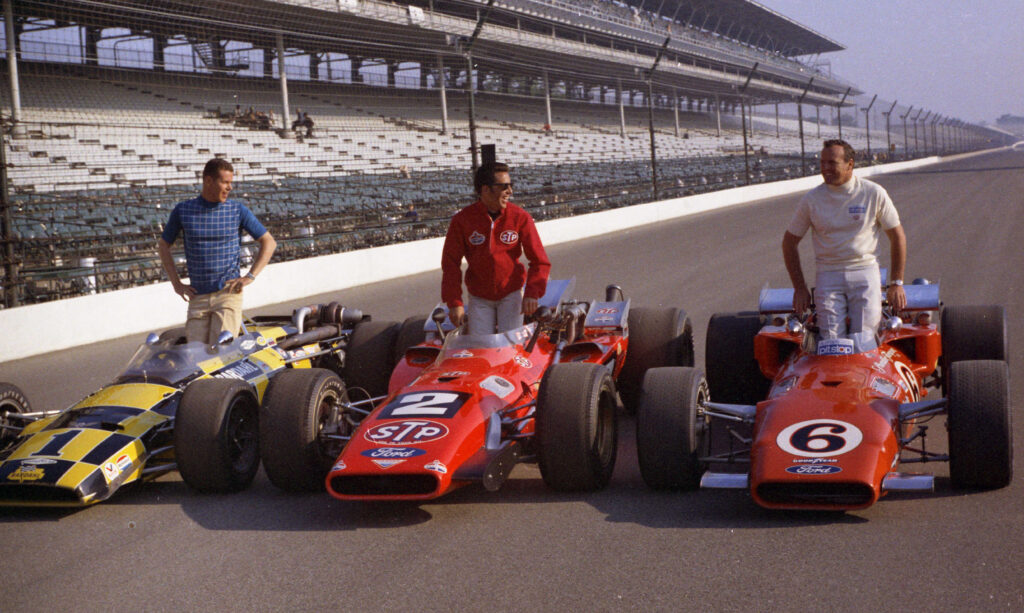
In Indy cars, you’d have to say that Foyt set the standard in the first half of the 1960s, but Mario was the man to beat in the latter part of the decade. Al Unser was the most regular winner in the 1970s before Rick Mears stormed onto the scene. We can only speculate what kind of career numbers Mears would have racked up had he not hurt his feet so badly at Sanair Speedway in 1984.
Michael Andretti emerged as the dominant driver of the late 1980s and early 90s, but when the CART/IRL split occurred, things got muddy. Alex Zanardi enjoyed a crushing three-year run in CART, while Sam Hornish was hard to beat in the IRL from 2001-06. When the two open-wheel series merged in 2008, Franchitti became the standard setter. And since Dario’s forced retirement at the end of 2013, Dixon has notched up four IndyCar Series titles and is acknowledged as the sport’s top gun. Newgarden currently plays the role of heir apparent.
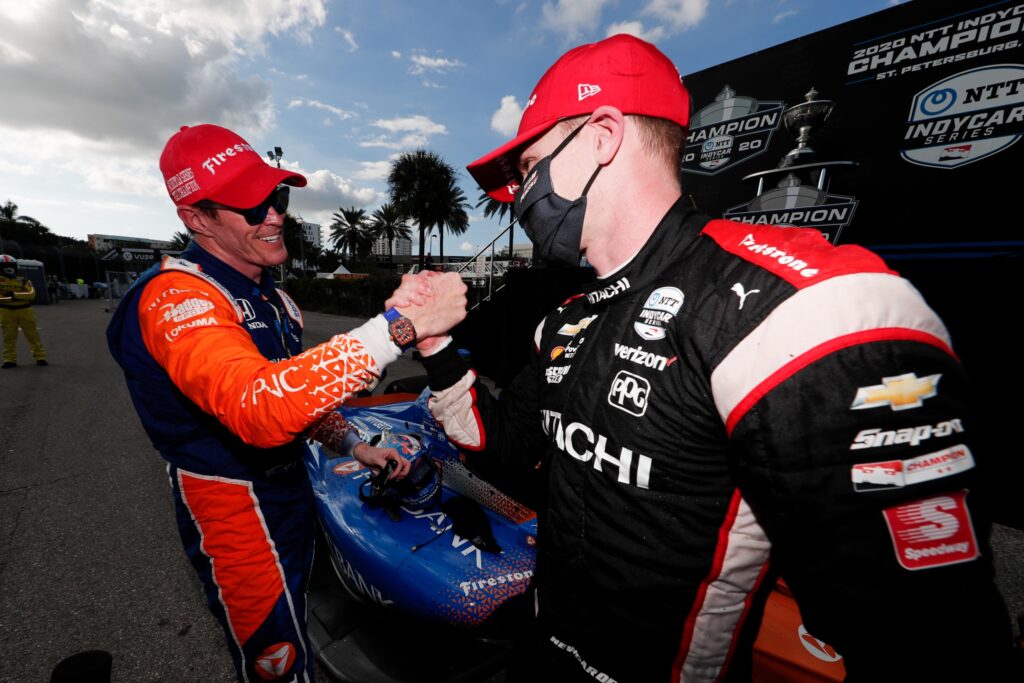
Here’s another measure of Dixon’s greatness: he’s won Indy car races over sixteen consecutive years. Foyt’s longest streak was seven years; Mario put together a pair of six-year runs from 1965-70 and 1983-88. Michael Andretti had a nine-year streak, but only if you exclude his Formula 1 sabbatical year. Dixon hasn’t had a winless season since 2004.
It’s a shame that Scott doesn’t get the recognition and respect he deserves because he’s truly a great guy. I got to know him in 1999 when he arrived in America as an 18-year old to contest Indy Lights for Stefan Johansson’s team. At the time, one of my outlets was New Zealand Speed Sportmagazine, and my chief responsibility was covering Dixon’s American career.
In 2000, Scott was signed to a long-term contract by PacWest Racing. Some of you may remember that I was the public relations representative for PacWest in 1997 and ’98 and I was lucky enough to remain a friend and honorary team member. Led by the late John Anderson, there were some truly great people associated with PacWest, giving Dixon a solid platform to develop his skills and move up the ladder.
Mauricio Gugelmin was the perfect teammate and Indy car mentor for Dixon and the young driver took full advantage. Even as a rookie, Dixon had an uncanny ability to manage a race, whether through taking care of his tires or stretching his fuel. At Nazareth Speedway in his third Indy car start, Dixon triumphed over a charging Kenny Brack to become the sport’s youngest winner at the time (20 years, 9 months). Dixon’s drives at Milwaukee (third place) and Road America (another podium after multiple pit stops to replace his Reynard’s rear wing) demonstrated Dixon’s potential, and he was praised by two-time CART champion Gil de Ferran after their race-long duel at Laguna Seca.
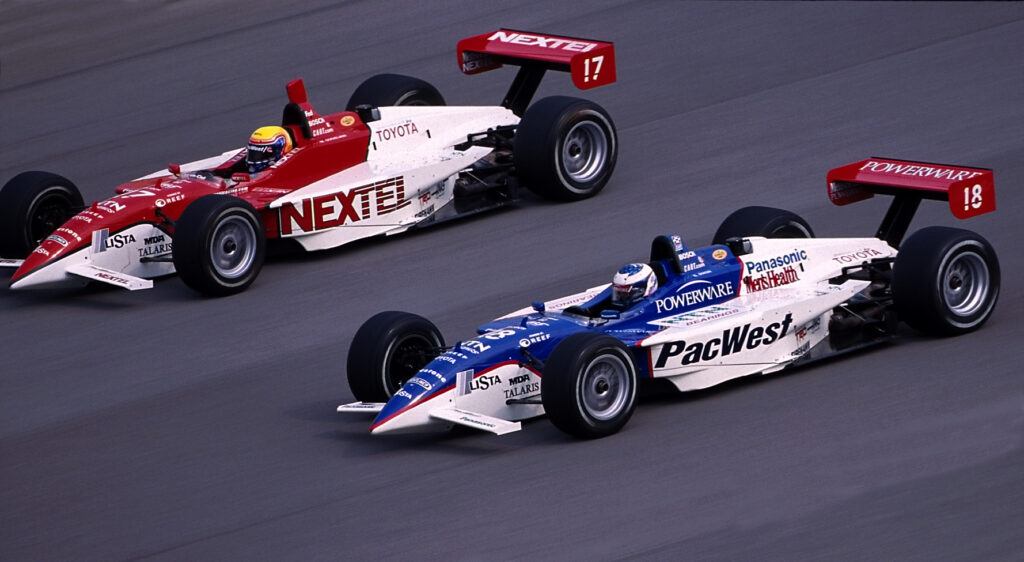
PacWest essentially folded at the end of 2001, and after three starts in early 2002 for PWR Championship Racing, Toyota facilitated Dixon’s move to Chip Ganassi’s organization. The rest is history, with Dixon racking up race wins and championships while working with no fewer than 20 teammates over the years. Chip Ganassi loves to say, “I like winners,” and he certainly found one in Dixon.
My recently published book “Time Flies: The History of PacWest Racing” covers the early phases of Dixon’s successful American career. Click here to order your copy!
As mentioned earlier, you can’t compare eras. But I’d like to think Dixon would have been a champion in any era. He’s won Indy car races and championships in five distinct eras of Indy car design or philosophy: 1. A 2.65-liter turbo V-8 to CART specs; 2. IRL Dallara formula, 2003-2011; 3. DW12 era, 2012-14; 4. High downforce “aero kit” era, 2015-17; 5. Low downforce “universal aero” era, 2018 to the present. And he doesn’t show any sign of slowing down.
Drivers don’t compete into their 50s the way Foyt, Mario and the Unsers did. But even if Dixon keeps at it to age 45, he is likely to pass Mario on the win list and could match Foyt’s tally of championships. Fit and motivated as ever, Dixon’s best days could still be ahead.


